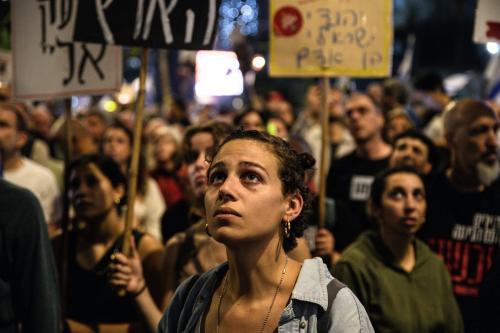We have all heard stories of how Afghans love to fight. But how do they perform as soldiers in a national army? On this issue could turn much of our future hope for success, and our eventual exit, in Afghanistan. The Taliban seems unlikely to be defeated anytime soon, so drawing down our own forces will depend largely on handing off more of the fight to the Afghan army.
A prominent retired Marine general officer, Bing West, has recently written a book critiquing the Afghan army. Bing argues that Afghan soldiers lack confidence and fighting spirit, and that it’s time we focused on ensuring “that the Afghan forces can win their own war” by radically changing a training strategy he sees as failing. Is he right?
Based partly on recent travels in the country, we believe that the progress with the Afghan army is a largely unsung good news story. There is a long ways to go, to be sure. The army, now equal in size to combined foreign forces at around 150,000, needs to keep growing — not just to its current goal of 171,000, but to at least 200,000, and it needs to improve further along the way. But overall, things are on the right track.
The army’s progress
A number of promising efforts and reforms have been instituted under Lt. Gen. Bill Caldwell, who runs the training command, and other American and Afghan leaders:
*Afghan soldiers now are paid a wage that is “competitive” with that offered by the Taliban, about $250 a month in combat zones.
*Because of literacy training and other reforms, Afghan soldiers are beginning to access money from their bank accounts, not to mention keeping track of their weapons and performing other simple tasks more competently.
*Afghanistan’s main military academy, the country’s equivalent of a West Point, is selecting candidates on merit and is now sending at least 95% of its graduates to the field where they are needed for the fight, instead of to desk jobs in Kabul, as had been the case before 2010.
*Once they go through eight weeks of individual training and another six to eight weeks of unit training, Afghan forces are not simply sent off on deployment. About 70% now have some form of intensive “partnering” in the field with NATO forces. Ideally, they train, patrol and fight together with a NATO sister unit. At a minimum, they have embedded advisory teams who help their leadership with planning and oversight. Sustaining this will be critical as the Afghan army grows, but the trend is good now.
*Afghan soldiers do fight. According to Gen. David Petraeus’congressional testimony in March, they provided 60% of all combined forces for the difficult missions in and around Kandahar last year. To be sure, in the early phases of intensive clearing operations in enemy sanctuaries, NATO forces must still take the lead. But those clearing operations do not last forever, and some Afghan units, such as the commandos and special police, are in fact able to help them. The Afghans will have to prove that they can hold what NATO clears, but they seem increasingly up to par.
*As a reflection of their willingness to fight, Afghan troops take substantial casualties. Between army and police, more than 1,000 a year have been making the ultimate sacrifice in recent times. These are substantially greater losses than those suffered by foreign forces.
*Afghan soldiers are increasingly professional. As one indicator, they are causing relatively few casualties to innocents. Combined NATO/Afghan forces caused only 16% of the civilian casualties of war last year, according to a new UN report. Of that 16%, the largest number came from NATO airstrikes rather than Afghan mistakes or crimes.
*According to NATO’s admittedly imperfect evaluation system for Afghan forces, more than two-thirds of the country’s kandaks, or battalions, now score 3 or 4 on a scale of 1 to 5 (with 5 highest) according to NATO commanders. These scoring systems are imperfect, though, and the Afghan army’s true fighting capabilities will only be known in future battles.
*According to recent polling, 70% of Afghans see their army as “capable,” up from 59% last year. The police are another story, but even their forces have improved in some locations.
Even so, hurdles remain
As noted, problems persist. Too many Afghan commanders still owe their loyalties to patronage networks, and too many police generals get their jobs by paying for them. The military’s ethnic balance overall is pretty good, but southern Pashtuns from provinces like Kandahar and Helmand are still badly underrepresented in the force — even if the numbers are improving.
Political tensions in Kabul, if they worsen, could place severe pressures on the army along ethnic lines. Tensions between President Hamid Karzai and the United States — as seen in the infamous Quran burning tragedies of recent weeks — highlight another challenge. But for those wanting to find some reason for hope in our admittedly frustrating and often discouraging mission in Afghanistan, the country’s army is a good place to start.


Commentary
Op-edAfghan Army Finding Its Footing
April 13, 2011